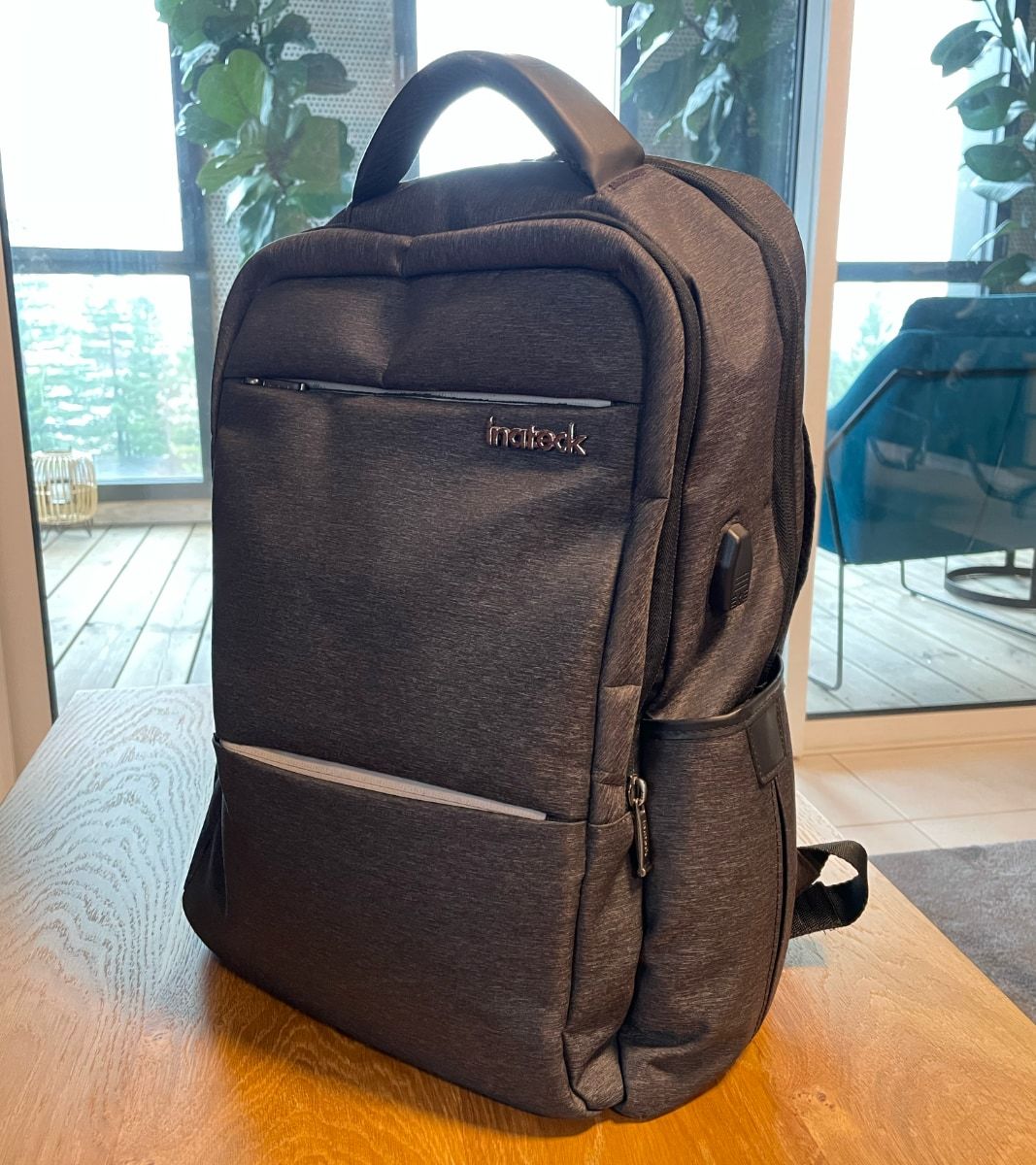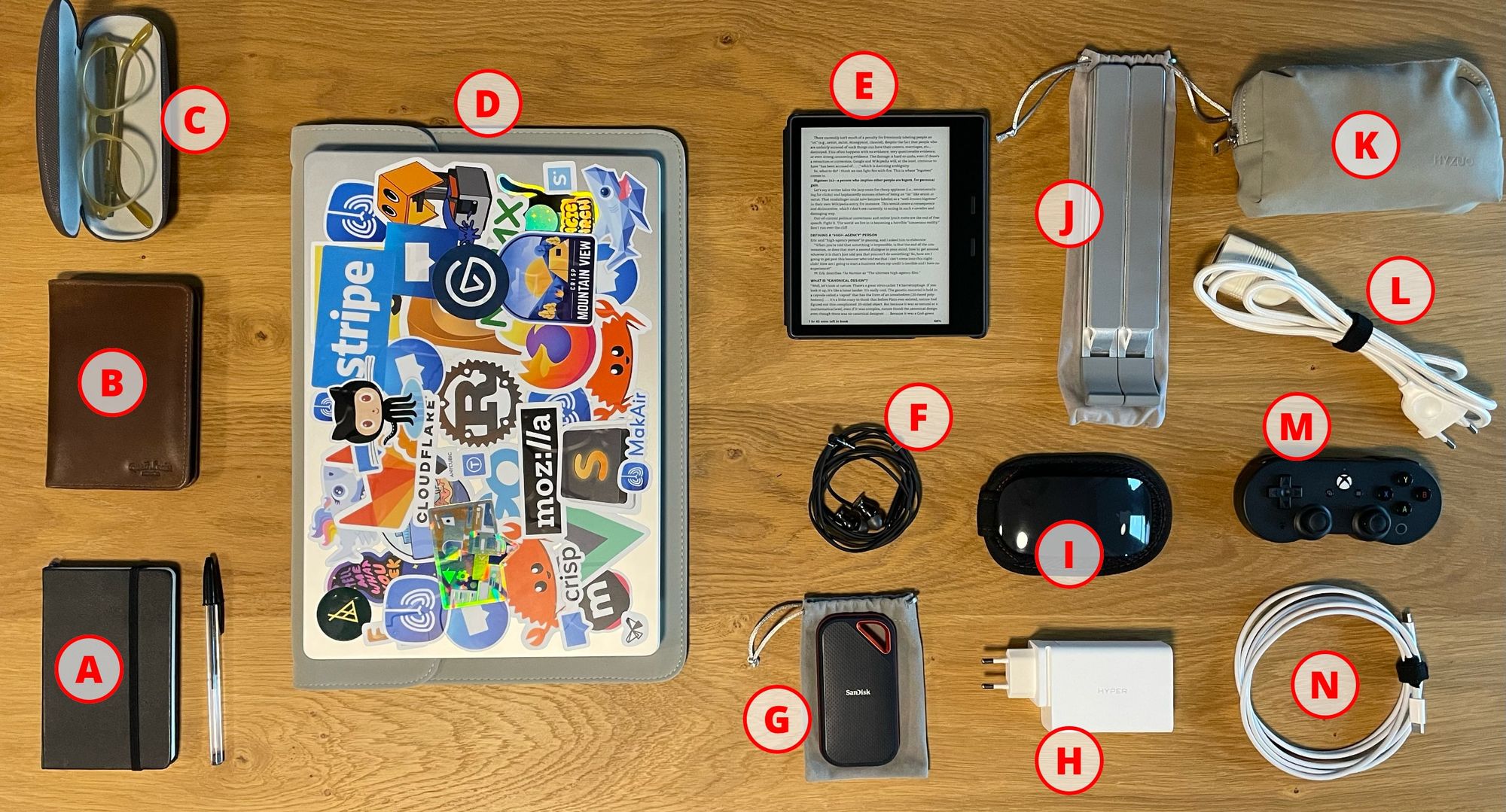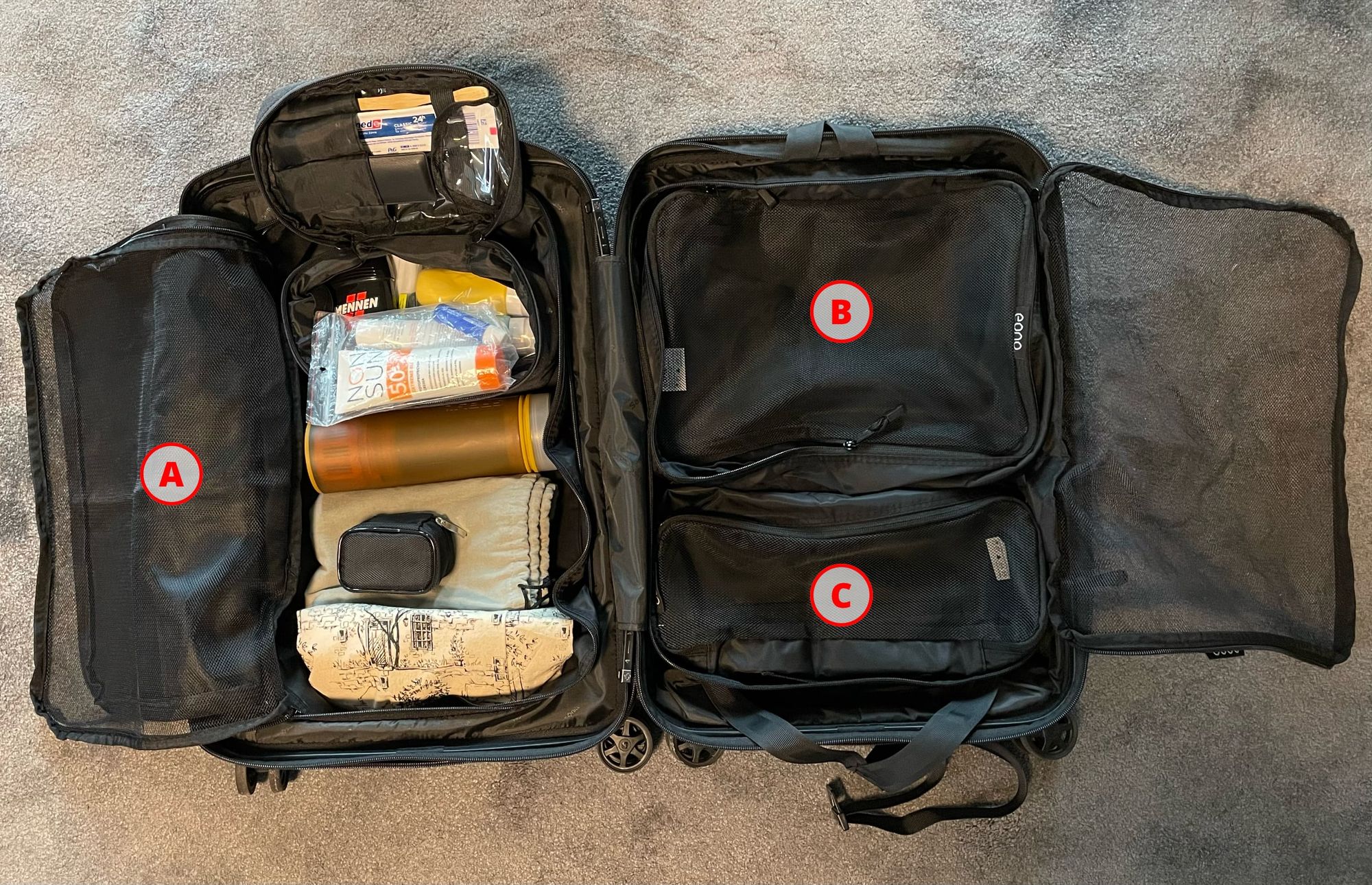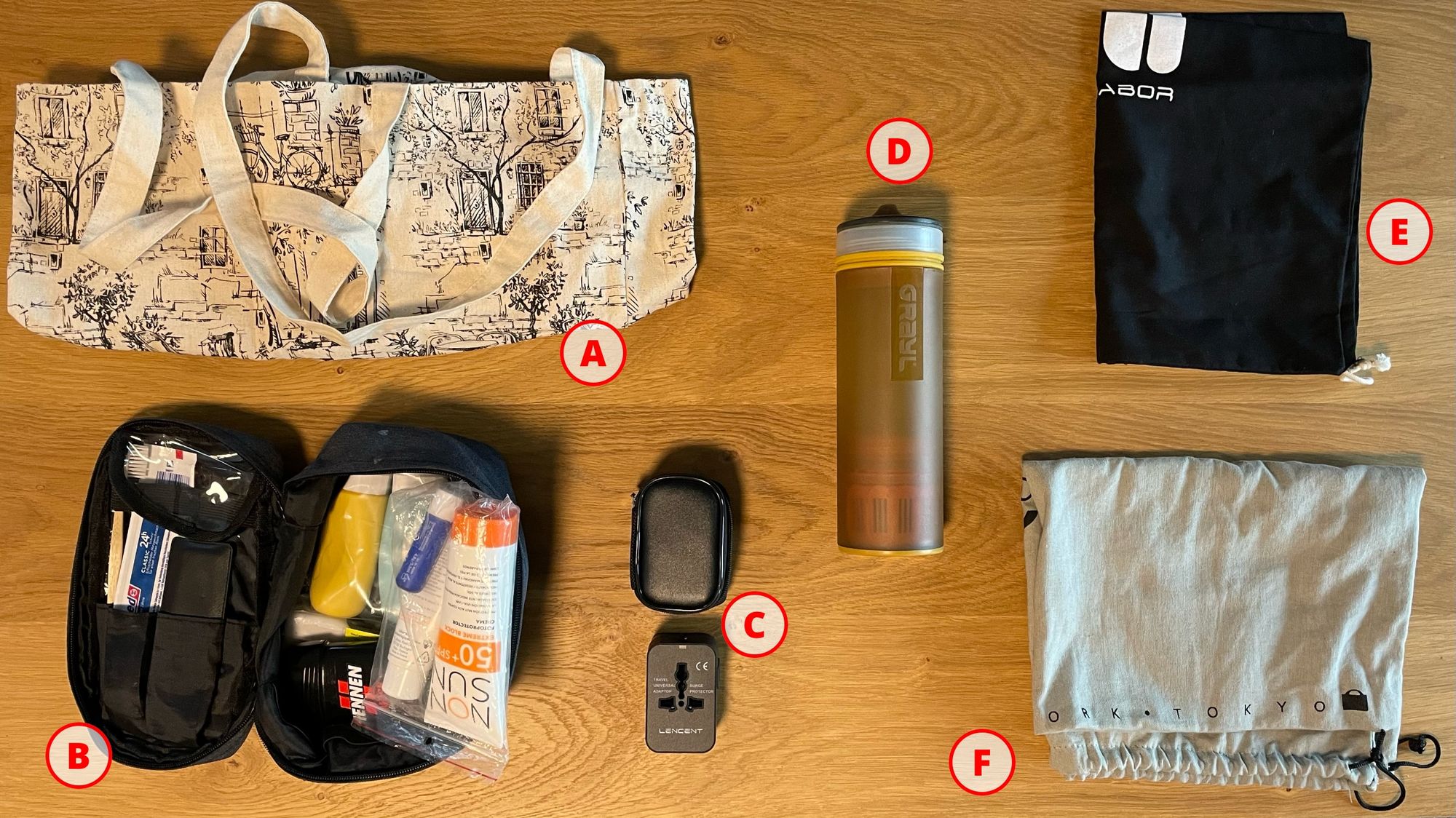At home or on the go, I am trying to be a minimalist, reducing the amount of objects that I own to the strict necessary.
I am also a part-time Digital Nomad. Working on the go implies carrying all my tech gear with me, therefore I had to think of an efficient way to pack all my things in the most compact and carefree way.
This short article explains my packing process. My motivation is to keep a record of all the things I own, in the event one of my travel bag gets lost or stolen; I can easily buy everything again and put things back together. I also think that this can be useful to other nomads, as this process has been refined over time with my personal experience.
My packing process is overall very simple; I pack everything in two bags: a day bag, and a suitcase. Each object has an allocated location in the bag. It is therefore very noticeable if something is missing while I pack.

👉 Note that, as of early 2023, you may find it hard to buy some gear I own, as there are shortages due to the current world geopolitical situation, and COVID issues in China. The outlook for certain items is unclear.
Bag 1: the day bag
The day bag holds all my tech valuables, eg. the MacBook Pro that I use for work.

The idea is that this bag is lightweight (~2.5kg) and compact, so that I can carry it with me everywhere I go, minimizing the risk of theft.
It is also rain-resistant and has a plastic-based hard texture that cannot scratch or tear. I want to emphasis on this one, as my previous day bag had a nice-looking leather-like layer on its surface, which did not last long. My current bag is already 4 years old and still rocking without a scratch! Sure, it doesn’t look as pretty as a lot of backpacks you can find in shops, but it’s pretty durable and costed a cheap $60 (in 2018).
Looking inside my day bag, you can find the following things:

- A. Notepad, mostly for ToDo lists
- B. Wallet (passport, paper copy of my ID, backup credit cards, emergency cash)
- C. Glasses
- D. MacBook Pro (M1 Pro 16”)
- E. Kindle Oasis (see product)
- F. Sennheiser earbuds (see product)
- G. SanDisk Extreme Pro 2TB SSD (see product)
- H. HyperJuice 100W GaN charger (with support for all international power sockets) (see product)
- I. Apple Magic Mouse
- J. Laptop stand (see product)
- K. Accessory bag (eg. USB cables, Apple MagSafe Duo charger, etc.)
- L. European power cord extension (1.5m)
- M. 8bitdo SN30 Pro (cloud gaming controller) (see product)
- N. USB-C to USB-C charging cable (for my Mac)
Bag 2: the suitcase
The suitcase contains all my clothes and hygiene products, as well as certain extra accessories.

The goal with this suitcase is to limit its size to the maximum allowed for cabin on long-distance flights, with a typical maximum weight of 10kg.
As the suitcase stays in the hotel room or Airbnb, it does not contain any valuable, meaning no tech gear, no cash and no credit card.
As soon as I arrive, I can easily empty the suitcase and store it (as I won’t need it for long). All my stuff is stored in two large packing bags, which I can take off the suitcase in a matter of seconds. Those large packing bags contain smaller packing bags for each kind of cloth. The benefit of opting for packing bags is that you do not need to deal with your heavy suitcase while packing: you simply pack everything in the packing bags (this takes about 5 minutes). Then, when the packing bags are full, you simply move them to the actual suitcase (this takes 10 seconds). Finally, you zip close the suitcase, and you’re done.
Unpacking is as easy: open the suitcase, take both packing bags, and store them in your bedroom. You can use the packing bags themselves as your nomad closet.
The packing bags come from an Amazon brand, which you can buy here. Make sure to pick the right size that best fits your suitcase.
Apart from the hygiene products, I also carry with me some useful accessories, like a reusable grocery bag, a laundry bag, and, most important of all, a water purifier bottle. More on that one…
I’ve learnt the hard way that I should never trust the tap water in the countries that I visit. I also do not like to buy water bottles all the time (it’s a tedious process, and a lot of countries do not recycle plastic). Instead, I got a 500ml water purifier bottle from Grayl that can filter undrinkable water (as long as it’s clear water; it is even capable of filtering bacterias, parasites and some viruses). I swap the filter from the bottle every year, after purifying 200-300L of water (you need to drink about 1.5L of water a day, so that’s about 130-200 days of filter lifetime).
If you open my suitcase, you’ll find two compartments, with two large packing bags, containing smaller packing bags:

- A. Accessories packing bag
- B. Clothes packing bag
- C. Underwear packing bag
The left packing bag contains all my non-clothes accessories:

- A. Reusable bag for groceries
- B. Hygiene products
- C. International socket adapter
- D. Water purifier bottle (from Grayl)
- E. Sport shoes bag (I do not always have them with me in the suitcase)
- F. Laundry bag
That’s all! My packing process is as simple as that.
🇫🇷 Written from Nantes, France.
